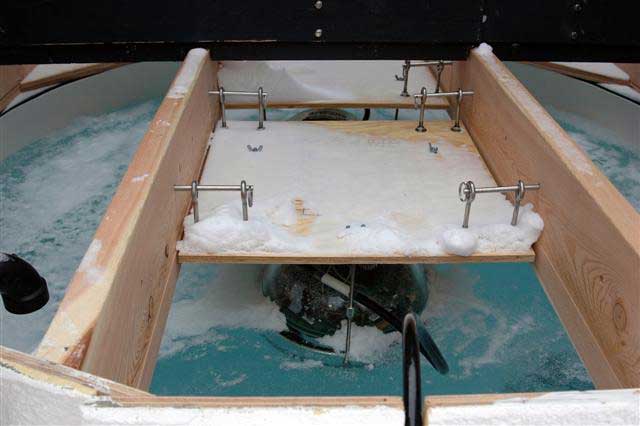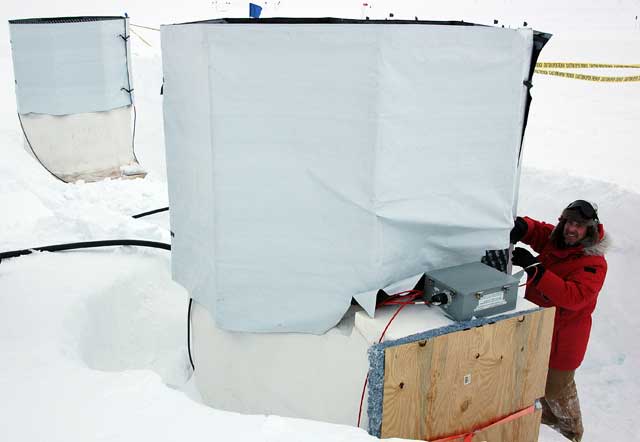|
Coming out on topIceCube surface array makes headway on high-energy cosmic raysPosted September 13, 2013
A study by researchers using data from the IceCube Neutrino Observatory The research, which draws on data collected by IceTop University of Delaware 
Photo Credit: Peter Rejcek/Antarctic Photo Library
A digital optical module for the IceToP experiment sits frozen in a tub of ice.
Cosmic rays, which are actually high-energy particles, can damage electronics on Earth, as well as human DNA, putting astronauts in space especially at risk. The more scientists learn about the energy spectrum and chemical composition of cosmic rays, the closer humanity will come to uncovering where these energetic particles originate and potentially how to mitigate their effects in the future. Cosmic rays are known to reach energies above 100 billion giga-electron volts (1011 GeV). The data reported in this latest paper cover the energy range from 1.6 times 106 GeV to 109 GeV. Researchers are particularly interested in identifying cosmic rays in this range because the transition from cosmic rays produced in the Milky Way Galaxy to “extragalactic” cosmic rays, produced outside the galaxy, is expected to occur in this energy range. Exploding stars called supernovae are among the sources of cosmic rays in the Milky Way, while distant objects such as collapsing massive stars and active galactic nuclei far from the Milky Way are believed to produce the highest energy particles in nature. IceTop consists of more than 80 stations, covering an area of one square kilometer on the South Pole surface above the detectors of IceCube, which are buried more than a kilometer deep in the ice. The analysis presented in this article was performed using data taken from June 2010 to May 2011, when the array consisted of only 73 stations. The IceCube collaboration includes nearly 250 people from 39 research institutions in 11 countries. NSF-funded research in this story: Francis Halzen, University of Wisconsin-Madison, Award Nos. 0937462, 0236449, 0639286 and 0636875 |



For USAP Participants |
For The Public |
For Researchers and EducatorsContact UsU.S. National Science FoundationOffice of Polar Programs Geosciences Directorate 2415 Eisenhower Avenue, Suite W7100 Alexandria, VA 22314 Sign up for the NSF Office of Polar Programs newsletter and events. Feedback Form |


